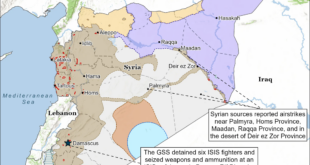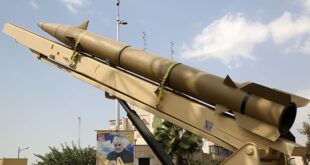The Kurdistan Workers’ Party (PKK) announced on Monday its dissolution after a forty-year insurgency against the Turkish state, a move Turkish officials claim was made without new negotiations — though some observers remain skeptical.
Türkiye has conducted increasingly aggressive military campaigns against PKK strongholds in northern Iraq and Syria in recent years, significantly weakening its operational capabilities and isolating it from regional actors
This development may weaken Ankara’s long-held view that the Kurdish-led Syrian Democratic Forces (SDF) was merely an extension of the PKK, paving the way for its smoother integration into Syria’s transitional government — a key step towards broader regional stabilization.
A number of questions have emerged from observers about how the Turkish government plans to implement and oversee the PKK’s disbandment, especially regarding disarmament and reintegration.
The Kurdistan Workers’ Party (PKK) announced its dissolution on Monday after a forty-year insurgency against the Turkish state. This development follows a call in February by Abdullah Öcalan — the PKK’s imprisoned founding leader — for the group to lay down arms and transition toward a political solution. Founded in 1978, the PKK originally sought to establish an independent Kurdish state but later shifted its goals toward achieving autonomy and cultural rights for Kurds within Türkiye.
While Turkish officials insist that no new negotiations occurred between Ankara and the PKK, many observers question this assertion, especially given the abruptness of the decision and its timing, months after Öcalan’s initial call to lay down arms. This ambiguity has fueled speculation about whether the move was a unilateral strategic decision by the PKK, or part of a broader political arrangement. If the latter, it remains unclear what, if any, concessions the Turkish government may have offered to produce such a result.
Historically, efforts to resolve the conflict between PKK and Türkiye through dialogue have repeatedly failed. Despite multiple ceasefires and peace talks — most notably between 2013 and 2015 — dialogue between the PKK and Ankara had consistently collapsed. This is mainly due to escalating Turkish military operations in Kurdish regions, a surge in Turkish nationalism, political and economic instability, and the increasingly volatile dynamics of the Syrian civil war. The PKK’s recent decision to disband came amid increasing military pressure from Türkiye, diplomatic isolation, and a shift in Kurdish political priorities in the region. In recent years, Türkiye has conducted increasingly aggressive military campaigns against PKK strongholds in northern Iraq and Syria, using drone strikes, cross-border raids, and intelligence-driven operations to target leadership figures and disrupt logistical networks. These operations significantly weakened the PKK’s operational capabilities and limited its mobility.
At the same time, the PKK had been facing diplomatic marginalization. Once able to leverage regional instability and international attention to maintain relevance, the group found itself increasingly sidelined as major powers recalibrated their alliances. The United States, while continuing to support Kurdish forces in Syria, particularly the Syrian Democratic Forces (SDF), has long remained distant from the PKK due to its terrorist designation and pressure from Ankara. European governments, though occasionally critical of Türkiye’s domestic repression of Kurds, have also largely treated the PKK as a pariah organization, with the European Union (EU) designating the PKK as a terrorist organization in 2002.
Even regional actors like Iran and the Kurdistan Regional Government (KRG) in Iraq, which had previously avoided direct confrontation with the PKK, have grown increasingly wary of its presence. For the KRG, this shift stems from the PKK’s entrenchment in northern Iraq, which has triggered repeated Turkish military operations and undermined local authority. While Iran has not been a direct supporter of the PKK, it had, at times, tolerated the group for strategic reasons. However, in recent years it began to view its regional activities — and affiliations with Kurdish militants on Iranian soil — as a source of instability.
The PKK’s regional footprint has also shaped developments in Syria, where its ideological and operational ties to local Kurdish forces have further complicated the regional political landscape. Historically, the rise of the Kurdish-led SDF in 2014 during the Syrian civil war and their U.S.-backed military success against Islamic State, bolstered Kurdish autonomy movements, like the PKK, in the last decade. In the past, Türkiye accused the SDF — and particularly its core militia, the People’s Protection Units (YPG) — of being an extension of the PKK. This perception fueled a broader Turkish strategy of conflating Kurdish political and military entities across the region, justifying cross-border operations into Syria and Iraq under the rubric of counterterrorism.
Following the fall of the Assad regime in December, Ankara feared the SDF would call for increased autonomy, potentially reviving the PKK’s influence after its military setbacks at the hands of Türkiye. These fears were minimized when the SDF signed a tentative agreement in March with interim Syrian President Ahmad al-Sharaa to integrate the SDF into the new administration, a blow to the PKK’s mission of broader Kurdish autonomy. However, the Turkish-backed Syrian National Army (SNA) has continued to attack the SDF despite the January announcement that it would also integrate into the Syrian administration. Syrian Foreign Minister Asaad al-Shaibani warned on Monday that “delaying the implementation of this agreement will prolong the chaos, open the door to foreign interference, and fuel separatist tendencies,” potentially referencing this reported interference by Türkiye.
The PKK’s dissolution could potentially reduce Turkish pressure on the SDF by weakening Ankara’s long-held view that the SDF was merely an extension of the PKK. This shift may pave the way for the SDF’s smoother integration into Syria’s transitional government — a key step towards broader regional stabilization. This process could also be made easier by U.S. President Donald Trump’s announcement on Tuesday that he would lift U.S. sanctions on Syria and begin normalizing relations with Damascus. The decision was made after consultation with Turkish President Recep Tayyip Erdogan and Saudi Arabia’s de-facto ruler Crown Prince Mohammed bin Salman.
At the same time, the end of the PKK’s insurgency marks a major domestic victory for Türkiye. President Erdogan has celebrated this development, stating that Ankara will closely monitor the PKK’s actions during this period and will act to prevent any attempts to undermine the process. However, the announcement is still recent, and the question remains of how the Turkish government plans to implement the PKK’s disbandment. According to Turkish media, disarmament is expected to take three to four months, though no official details have been provided regarding its structure or oversight. Speculation suggests that the process may be overseen jointly by Türkiye and the KRG or potentially managed through an international commission involving the U.S., EU, and Iraq.
There are also reports indicating that high-ranking PKK members may be relocated to third party countries, while lower-ranking fighters could eventually be reintegrated into Turkish society, pending the establishment of a legal framework. Reintegration is a long and complex process that requires more than legal reform; it demands sustained efforts to build social and economic support systems that can help former combatants transition to civilian life. Although the PKK’s announcement is recent and implementation will take time, the Turkish government could draw valuable lessons from countries like Indonesia and the Philippines, which have implemented demobilization and reintegration programs with mixed, but constructive outcomes.
 Eurasia Press & News
Eurasia Press & News




